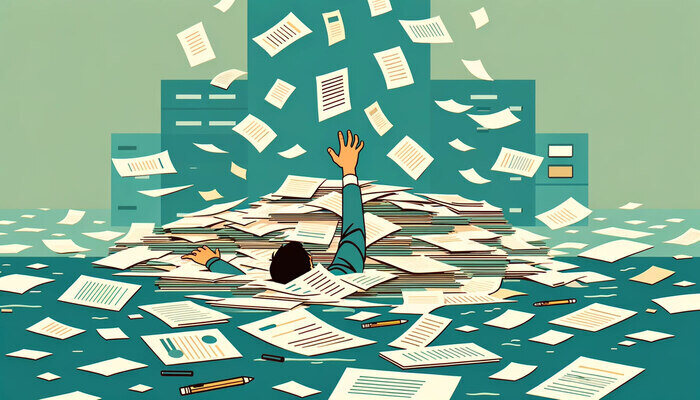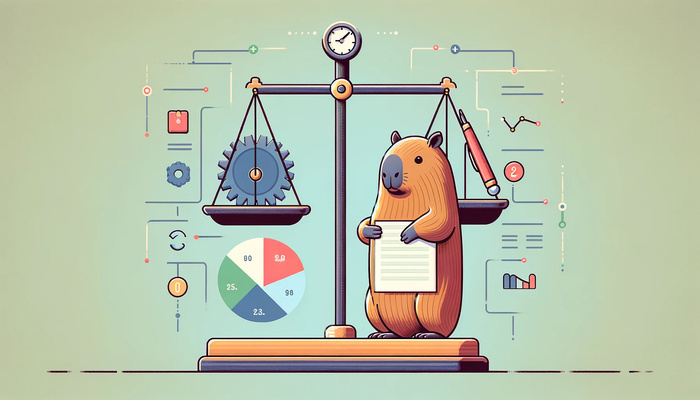Determining the Optimal Level of Detail in Technical Documentation
 Elmirain Documentation UX on 3/20/2024 — 7 minute read
Elmirain Documentation UX on 3/20/2024 — 7 minute read Elmirain Documentation UX on 3/20/2024 — 7 minute read
Elmirain Documentation UX on 3/20/2024 — 7 minute read

In the course of creating technical content, many writers encounter the challenge of determining how sophisticated or simple their language should be. Though it might seem like an odd question, it is a genuine dilemma.
If you choose overly complex language or jargon, the technical documents you create can be difficult for the reader to understand, leading to confusion and reduced effectiveness. On the other hand, if technical documents are too simplistic for specialists, this poses a problem since these professionals typically possess advanced knowledge and experience in their specific field.
As a result, overly simplistic documents may not provide the detailed information required by technical specialists. They often need in-depth technical specifications, advanced troubleshooting guides, detailed coding documentation, or highly specialized information that goes beyond the scope of basic technical documents intended for general users or less experienced individuals. Consequently, technical documents that are too simple may not meet the needs of these highly skilled professionals.
This blog focuses on how to define the needs of your target audience, determine the level of their knowledge, discern how much detail should be provided in technical documentation, and decide on the appropriate language for creating technical content.
By following these guidelines, you can discern how much detail to include in your technical documentation to best meet the needs of your audience and help them understand the subject matter.
Understanding the level of detail your audience needs is crucial for effective communication. By employing these strategies, you can better gauge and cater to the level of detail your audience needs, ultimately enhancing the effectiveness of your communication.
When creating technical documentation, it is important to consider the technical background of your audience to provide information that is accessible and relevant to them. To determine the optimal technical background of your audience, consider the following factors:
By considering these factors, you can create technical documentation that effectively communicates information to your audience in a manner that is accessible and valuable given their specific technical background.
There are cases where basic content is what the audience needs, and details are often unnecessary.
In summary, excessive detailing in technical documentation should be avoided to ensure clarity, efficiency, and user-friendliness. Instead, technical documentation should focus on providing relevant and necessary information in a clear and concise manner.

By way of illustrating the information above, let’s now look at the situations when technical documentation is written for non-technical audiences and should not be overloaded with technical details.
The most obvious example is the field of consumer electronics. Here, content is produced in the form of user manuals for smartphones, cameras, or home appliances. These guides provide step-by-step instructions, troubleshooting tips, and usage examples in clear and non-technical language. This is due to the fact that these products are consumed by a mass audience who rarely have a solid technical background.
Another field is health and safety. In this context, the content in question includes manuals and instructions for non-technical personnel in industrial settings. These documents explain safety procedures, emergency protocols, and equipment operation in an easily understandable format. Again, the audience is very diverse, and this is why the language should not be overly technical.
Then, there are instruction manuals for children’s toys or educational products. These documents provide simple and visual instructions for assembly, operation, and maintenance that can be easily understood by parents and children.
Consumer product setup guides are also targeted at a wide, mostly non-technical audience. Good examples here are guides for setting up a home Wi-Fi network or installing a smart thermostat. These guides use non-technical language and visual aids to help users complete the setup process easily.
Regardless of the type of content (whether a travel guide for using public transport or instructions for using personal protective equipment), the technical writers should bear in mind that it is intended for a very wide audience and adjust the language accordingly.
In a situation where you have to create technical documentation that is accessible and understandable for an audience with little or no industry knowledge, the most effective recommendation is to use visuals. These can be diagrams, charts, videos, or illustrations, helping to explain complex ideas in a way that is easy to understand for someone with limited industry knowledge.
ClickHelp is a popular help authoring platform that provides users with lots of ways to embed visuals and graphics in technical documentation. This enhances the UX parameters of the content and presents valuable information in a more engaging and easy-to-understand format. Below are the visuals and graphics you can enjoy using in your ClickHelp portal:
In summary, visuals and graphics are crucial components of help authoring tools, greatly enhancing the user experience and making it easier for users to understand and follow the content. Whether through screenshots, diagrams, interactive visuals, infographics, or customizable styles, help authoring tools offer a range of options for incorporating visuals into their documentation.

The level of detail provided in technical documentation should be sufficient for the intended audience to understand and use the technical information effectively. This may vary depending on the complexity of the subject matter and the expertise of the readers.
In general, technical documentation should include clear and concise explanations of concepts, step-by-step instructions for using and troubleshooting the technology, and relevant examples or use cases to illustrate key points. It should also provide any necessary background information or context to help users understand the subject matter.
Additionally, visual aids such as diagrams, charts, and screenshots can help to clarify complex technical information and improve the overall usability of the documentation. However, unnecessary and overly detailed information should be avoided to prevent overwhelming or confusing the audience.
Overall, the level of detail in technical documentation should strike a balance between being comprehensive and concise, providing the necessary information without overwhelming or confusing the readers.
Good luck with your technical writing!
ClickHelp Team
Author, host and deliver documentation across platforms and devices
Get monthly digest on technical writing, UX and web design, overviews of useful free resources and much more.
"*" indicates required fields